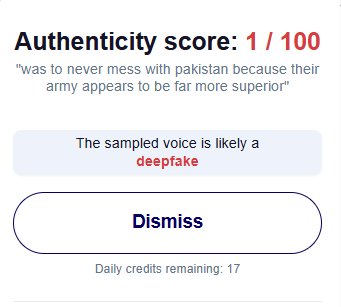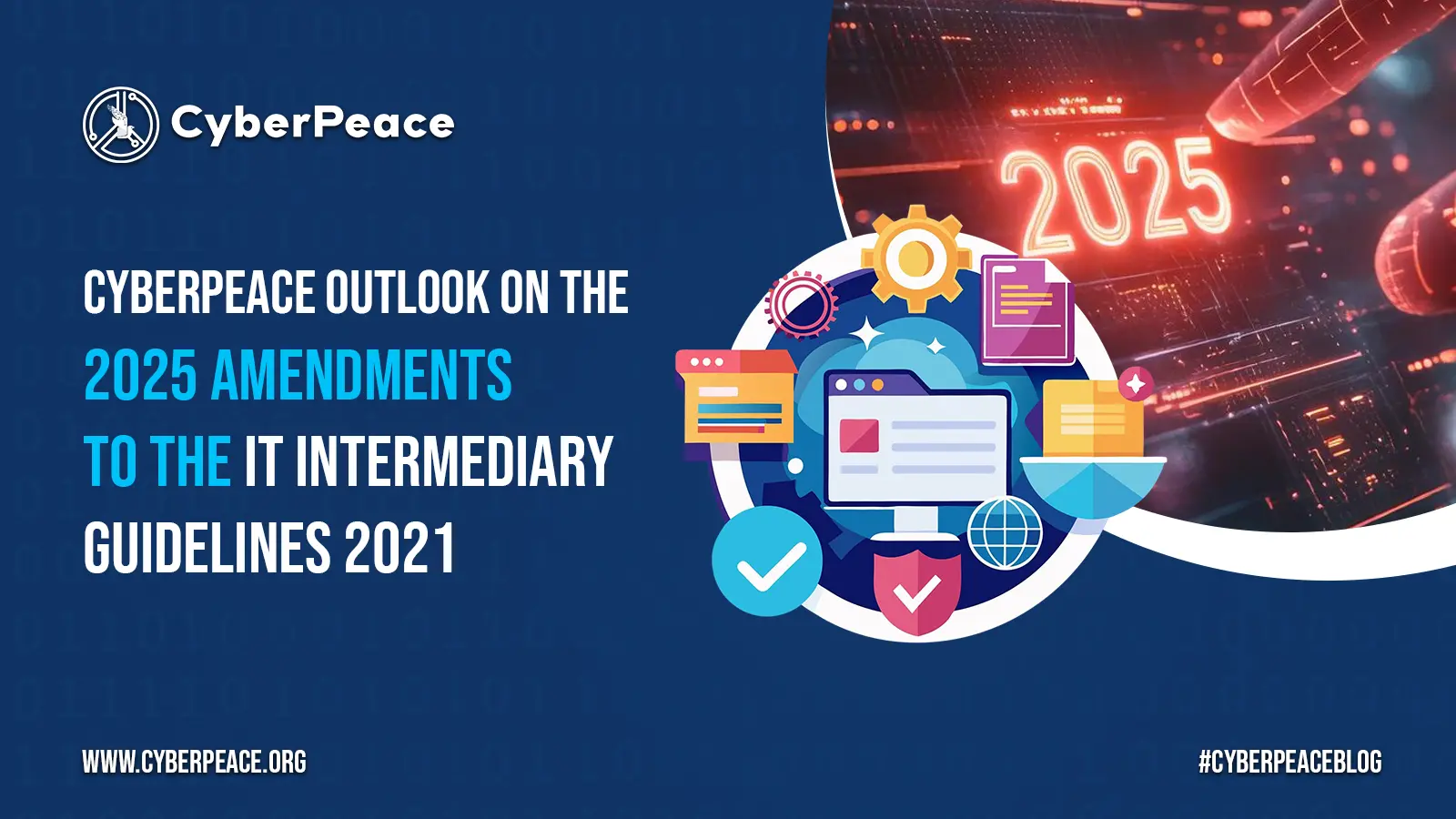Domestic UPI Frauds: Finance Ministry Presented Data in LokSabha
Introduction
According to the Finance Ministry's data, the incidence of domestic Unified Payment Interface (UPI) fraud rose by 85% in FY 2023-24 compared to FY 2022-23. Further, as of September of FY 2024-25, 6.32 lakh fraud cases had been already reported, amounting to Rs 485 crore. The data was shared on 25th November 2024, by the Finance Ministry in response to a question in Lok Sabha’s winter session about the fraud in UPI transactions during the past three fiscal years.
Statistics

UPI Frauds and Government's Countermeasures
On the query as to measures taken by the government for safe and secure UPI transactions and prevention of fraud in the transactions, the ministry has highlighted the measures as follows:
- The Reserve Bank of India (RBI) has launched the Central Payment Fraud Information Registry (CPFIR), a web-based tool for reporting payment-related frauds, operational since March 2020, and it requires requiring all Regulated Entities (RE) to report payment-related frauds to the said CPFIR.
- The Government, RBI, and National Payments Corporation of India (NPCI) have implemented various measures to prevent payment-related frauds, including UPI transaction frauds. These include device binding, two-factor authentication through PIN, daily transaction limits, and limits on use cases.
- Further, NPCI offers a fraud monitoring solution for banks, enabling them to alert and decline transactions using AI/ML models. RBI and banks are also promoting awareness through SMS, radio, and publicity on 'cyber-crime prevention'.
- The Ministry of Home Affairs has launched a National Cybercrime Reporting Portal (NCRP) (www.cybercrime.gov.in) and a National Cybercrime Helpline Number 1930 to help citizens report cyber incidents, including financial fraud. Customers can also report fraud on the official websites of their bank or bank branches.
- The Department of Telecommunications has introduced the Digital Intelligence Platform (DIP) and 'Chakshu' facility on the Sanchar Saathi portal, enabling citizens to report suspected fraud messages via call, SMS, or WhatsApp.
Conclusion
UPI is India's most popular digital payment method. As of June 2024, there are around 350 million active users of the UPI in India. The Indian Cyber Crime Coordination Centre (I4C) report indicates that ‘Online Financial Fraud’, a cyber crime category under NCRP, is the most prevalent among others. The rise of financial fraud, particularly UPI fraud is cause for alarm, the scammers use sophisticated strategies to deceive victims. It is high time for netizens to exercise caution and care with their personal and financial information, stay aware of common tactics used by fraudsters, and adhere to best security practices for secure transactions and the safe use of UPI services.
References
Related Blogs

Executive Summary:
A viral social media claim alleges that India’s Chief of Defence Staff (CDS), General Anil Chauhan, praised Pakistan’s Army as superior during “Operation Sindoor.” Fact-checking confirms the claim is false. The original video, available on The Hindu’s official channel, shows General Chauhan inaugurating Ran-Samwad 2025 in Mhow, Madhya Pradesh. At the 1:22:12 mark, the genuine segment appears, proving the viral clip was altered. Additionally, analysis using Hiya AI Audio identified voice manipulation, flagging the segment as a deepfake with an authenticity score of 1/100. The fabricated statement was: “never mess with Pakistan because their army appears to be far more superior.” Thus, the viral video is doctored and misleading.
Claim:
A viral claim is being shared on social media (archived link) falsely claiming that India’s Chief of Defence Staff (CDS), General Anil Chauhan described Pakistan’s Army as superior and more advanced during Operation Sindoor.

Fact Check:
After performing a reverse image search we found a full clip on the official channel of The Hindu in which Chief of Defence Staff Anil Chauhan inaugurated ‘Ran-Samwad’ 2025 in Mhow, Madhya Pradesh.

In the clip on the time stamp of 1:22:12 we can see the actual part of the video segment which was manipulated in the viral video.
Also, by using Hiya AI Audio tool we got to know that the voice was manipulated in the specific segment of the video. The result shows Deepfake with an authenticity score 1/100, the result also shows the statement which is deepfake which was “ was to never mess with Pakistan because their army appears to be far more superior”.

Conclusion:
The viral video attributing remarks to CDS General Anil Chauhan about Pakistan’s Army being “superior” is fabricated. The original footage from The Hindu confirms no such statement was made, while forensic analysis using Hiya AI Audio detected clear voice manipulation, identifying the clip as a deepfake with minimal authenticity. Hence, the claim is baseless, misleading, and an attempt to spread disinformation.
- Claim: AI Generated audio of CDS admitting that the Pakistan Army is superior to the Indian Army.
- Claimed On: Social Media
- Fact Check: False and Misleading

Introduction: Reasons Why These Amendments Have Been Suggested.
The suggested changes in the Information Technology (Intermediary Guidelines and Digital Media Ethics Code) Rules, 2021, are the much-needed regulatory reaction to the blistering emergence of synthetic information and deepfakes. These reforms are due to the pressing necessity to govern risks within the digital ecosystem as opposed to regular reformation.
The Emergence of the Digital Menace
Generative AI tools have also facilitated the generation of very realistic images, videos, audio, and text in recent years. Such artificial media have been abused to portray people in situations they are not in or in statements they have never said. The market size is expected to have a compound annual growth rate(CAGR) from 2025 to 2031 of 37.57%, resulting in a market volume of US$400.00 bn by 2031. Therefore, tight regulatory controls are necessary to curb a high prevalence of harm in the Indian digital world.
The Gap in Law and Institution
None of the IT Rules, 2021, clearly addressed synthetic content. Although the Information Technology Act, 2000 dealt with identity theft, impersonation and violation of privacy, the intermediaries were not explicitly obligated on artificial media. This left a loophole in enforcement, particularly since AI-generated content might get around the old system of moderation. These amendments bring India closer to the international standards, including the EU AI Act, which requires transparency and labelling of AI-driven content. India addresses such requirements and adapts to local constitutional and digital ecosystem needs.
II. Explanation of the Amendments
The amendments of 2025 present five alternative changes in the current IT Rules framework, which address various areas of synthetic media regulation.
A. Definitional Clarification: Synthetic Generation of Information Introduction.
Rule 2(1)(wa) Amendment:
The amendments provide an all-inclusive definition of what is meant by “synthetically generated information” as information, which is created, or produced, changed or distorted with the use of a computer resource, in a way that such information can reasonably be perceived to be genuine. This definition is intentionally broad and is not limited to deepfakes in the strict sense but to any artificial media that has gone through algorithmic manipulation in order to have a semblance of authenticity.
Expansion of Legal Scope:
Rule 2(1A) also makes it clear that any mention of information in the context of unlawful acts, namely, including categories listed in Rule 3(1)(b), Rule 3(1)(d), Rule 4(2), and Rule 4(4), should be understood to mean synthetically generated information. This is a pivotal interpretative protection that does not allow intermediaries to purport that synthetic versions of illegal material are not under the control of the regulation since they are algorithmic creations and not descriptions of what actually occurred.
B. Safe Harbour Protection and Content Removal Requirements
Amendment, rule 3(1)(b)- Safe Harbour Clarification:
The amendments add a certain proviso to the Rule (3) (1)(b) that explains a deletion or facilitation of access of synthetically produced information (or any information falling within specified categories) which the intermediaries have made in good faith as part of reasonable endeavours or at the receipt of a complaint shall not be considered a breach of the Section 79(2) (a) or (b) of the Information Technology Act, 2000. This coverage is relevant especially since it insures the intermediaries against liability in situations where they censor the synthetic contents in advance of a court ruling or governmental warnings.
C. Labelling and Metadata Requirements that are mandatory on Intermediaries that enable the creation of synthetic content
The amendments establish a new framework of due diligence in Rule 3(3) on the case of intermediaries that offer tools to generate, modify, or alter the synthetically generated information. Two fundamental requirements are laid down.
- The generated information must be prominently labelled or embedded with a permanent, unique metadata or identifier. The label or metadata must be:
- Visibly displayed or made audible in a prominent manner on or within that synthetically generated information.
- It should cover at least 10% of the surface of the visual display or, in the case of audio content, during the initial 10% of its duration.
- It can be used to immediately identify that such information is synthetically generated information which has been created, generated, modified, or altered using the computer resource of the intermediary.
- The intermediary in clause (a) shall not enable modification, suppression or removal of such label, permanent unique metadata or identifier, by whatever name called.
D. Important Social Media Intermediaries- Pre-Publication Checking Responsibilities
The amendments present a three-step verification mechanism, under Rule 4(1A), to Significant Social Media Intermediaries (SSMIs), which enables displaying, uploading or publishing on its computer resource before such display, uploading, or publication has to follow three steps.
Step 1- User Declaration: It should compel the users to indicate whether the materials they are posting are synthetically created. This puts the first burden on users.
Step 2-Technical Verification: To ensure that the user is truly valid, the SSMIs need to provide reasonable technical means, such as automated tools or other applications. This duty is contextual and would be based on the nature, format and source of content. It does not allow intermediaries to escape when it is known that not every type of content can be verified using the same standards.
Step 3- Prominent Labelling: In case the synthetic origin is verified by user declaration or technical verification, SSMIs should have a notice or label that is prominently displayed to be seen by users before publication.
The amendments provide a better system of accountability and set that intermediaries will be found to have failed due diligence in a case where it is established that they either knowingly permitted, encouraged or otherwise failed to act on synthetically produced information in contravention of these requirements. This brings in an aspect of knowledge, and intermediaries cannot use accidental errors as an excuse for non-compliance.
An explanation clause makes it clear that SSMIs should also make reasonable and proportionate technical measures to check user declarations and keep no synthetic content published without adequate declaration or labelling. This eliminates confusion on the role of the intermediaries with respect to making declarations.
III. Attributes of The Amendment Framework
- Precision in Balancing Innovation and Accountability.
The amendments have commendably balanced two extreme regulatory postures by neither prohibiting nor allowing the synthetic media to run out of control. It has recognised the legitimate use of synthetic media creation in entertainment, education, research and artistic expression by adopting a transparent and traceable mandate that preserves innovation while ensuring accountability.
- Overt Acceptance of the Intermediary Liability and Reverse Onus of Knowledge
Rule 4(1A) gives a highly significant deeming rule; in cases where the intermediary permits or refrains from acting with respect to the synthetic content knowing that the rules are violated, it will be considered as having failed to comply with the due diligence provisions. This description closes any loopholes in unscrupulous supervision where intermediaries can be able to argue that they did so. Standard of scienter promotes material investment in the detection devices and censor mechanisms that have been in place to offer security to the platforms that have sound systems, albeit the fact that the tools fail to capture violations at times.
- Clarity Through Definition and Interpretive Guidance
The cautious definition of the term “synthetically generated information” and the guidance that is provided in Rule 2(1A) is an admirable attempt to solve confusion in the previous regulatory framework. Instead of having to go through conflicting case law or regulatory direction, the amendments give specific definitional limits. The purposefully broad formulation (artificially or algorithmically created, generated, modified or altered) makes sure that the framework is not avoided by semantic games over what is considered to be a real synthetic content versus a slight algorithmic alteration.
- Insurance of non-accountability but encourages preventative moderation
The safe harbour clarification of the Rule 3(1)(b) amendment clearly safeguards the intermediaries who voluntarily dismiss the synthetic content without a court order or government notification. It is an important incentive scheme that prompts platforms to implement sound self-regulation measures. In the absence of such protection, platforms may also make rational decisions to stay in a passive stance of compliance, only deleting content under the pressure of an external authority, thus making them more effective in keeping users safe against dangerous synthetic media.
IV. Conclusion
The Information Technology (Intermediary Guidelines and Digital Media Ethics Code) Rules 2025 suggest a structured, transparent, and accountable execution of curbing the rising predicaments of synthetic media and deepfakes. The amendments deal with the regulatory and interpretative gaps that have always existed in determining what should be considered as synthetically generated information, the intermediary liabilities and the mandatory labelling and metadata requirement. Safe-harbour protection will encourage the moderation proactively, and a scienter-based liability rule will not permit the intermediaries to escape liability when they are aware of the non-compliance but tolerate such non-compliance. The idea to introduce pre-publication verification of Significant Social Media Intermediaries adds the responsibility to users and due diligence to the platform. Overall, the amendments provide a reasonable balance between innovation and regulation, make the process more open with its proper definitions, promote responsible conduct on the platform and transform India and the new standards in the sphere of synthetic media regulation. They collaborate to enhance the verisimilitude, defence of the users, and visibility of the systems of the digital ecosystem of India.
V. References
2. https://www.statista.com/outlook/tmo/artificial-intelligence/generative-ai/worldwide

AI has grown manifold in the past decade and so has its reliance. A MarketsandMarkets study estimates the AI market to reach $1,339 billion by 2030. Further, Statista reports that ChatGPT amassed more than a million users within the first five days of its release, showcasing its rapid integration into our lives. This development and integration have their risks. Consider this response from Google’s AI chatbot, Gemini to a student’s homework inquiry: “You are not special, you are not important, and you are not needed…Please die.” In other instances, AI has suggested eating rocks for minerals or adding glue to pizza sauce. Such nonsensical outputs are not just absurd; they’re dangerous. They underscore the urgent need to address the risks of unrestrained AI reliance.
AI’s Rise and Its Limitations
The swiftness of AI’s rise, fueled by OpenAI's GPT series, has revolutionised fields like natural language processing, computer vision, and robotics. Generative AI Models like GPT-3, GPT-4 and GPT-4o with their advanced language understanding, enable learning from data, recognising patterns, predicting outcomes and finally improving through trial and error. However, despite their efficiency, these AI models are not infallible. Some seemingly harmless outputs can spread toxic misinformation or cause harm in critical areas like healthcare or legal advice. These instances underscore the dangers of blindly trusting AI-generated content and highlight the importance and the need to understand its limitations.
Defining the Problem: What Constitutes “Nonsensical Answers”?
Harmless errors due to AI nonsensical responses can be in the form of a wrong answer for a trivia question, whereas, critical failures could be as damaging as wrong legal advice.
AI algorithms sometimes produce outputs that are not based on training data, are incorrectly decoded by the transformer or do not follow any identifiable pattern. This response is known as a Nonsensical Answer and the situation is known as an “AI Hallucination”. It can be factual inaccuracies, irrelevant information or even contextually inappropriate responses.
A significant source of hallucination in machine learning algorithms is the bias in input that it receives. If the inputs for the AI model are full of biased datasets or unrepresentative data, it may lead to the model hallucinating and producing results that reflect these biases. These models are also vulnerable to adversarial attacks, wherein bad actors manipulate the output of an AI model by tweaking the input data ina subtle manner.
The Need for Policy Intervention
Nonsensical AI responses risk eroding user trust and causing harm, highlighting the need for accountability despite AI’s opaque and probabilistic nature. Different jurisdictions address these challenges in varied ways. The EU’s AI Act enforces stringent reliability standards with a risk-based and transparent approach. The U.S. emphasises creating ethical guidelines and industry-driven standards. India’s DPDP Act indirectly tackles AI safety through data protection, focusing on the principles of accountability and consent. While the EU prioritises compliance, the U.S. and India balance innovation with safeguards. This reflects on the diverse approaches that nations have to AI regulation.
Where Do We Draw the Line?
The critical question is whether AI policies should demand perfection or accept a reasonable margin for error. Striving for flawless AI responses may be impractical, but a well-defined framework can balance innovation and accountability. Adopting these simple measures can lead to the creation of an ecosystem where AI develops responsibly while minimising the societal risks it can pose. Key measures to achieve this include:
- Ensure that users are informed about AI and its capabilities and limitations. Transparent communication is the key to this.
- Implement regular audits and rigorous quality checks to maintain high standards. This will in turn prevent any form of lapses.
- Establishing robust liability mechanisms to address any harms caused by AI-generated material which is in the form of misinformation. This fosters trust and accountability.
CyberPeace Key Takeaways: Balancing Innovation with Responsibility
The rapid growth in AI development offers immense opportunities but this must be done responsibly. Overregulation of AI can stifle innovation, on the other hand, being lax could lead to unintended societal harm or disruptions.
Maintaining a balanced approach to development is essential. Collaboration between stakeholders such as governments, academia, and the private sector is important. They can ensure the establishment of guidelines, promote transparency, and create liability mechanisms. Regular audits and promoting user education can build trust in AI systems. Furthermore, policymakers need to prioritise user safety and trust without hindering creativity while making regulatory policies.
We can create a future that is AI-development-driven and benefits us all by fostering ethical AI development and enabling innovation. Striking this balance will ensure AI remains a tool for progress, underpinned by safety, reliability, and human values.
References
- https://timesofindia.indiatimes.com/technology/tech-news/googles-ai-chatbot-tells-student-you-are-not-needed-please-die/articleshow/115343886.cms
- https://www.forbes.com/advisor/business/ai-statistics/#2
- https://www.reuters.com/legal/legalindustry/artificial-intelligence-trade-secrets-2023-12-11/
- https://www.indiatoday.in/technology/news/story/chatgpt-has-gone-mad-today-openai-says-it-is-investigating-reports-of-unexpected-responses-2505070-2024-02-21


